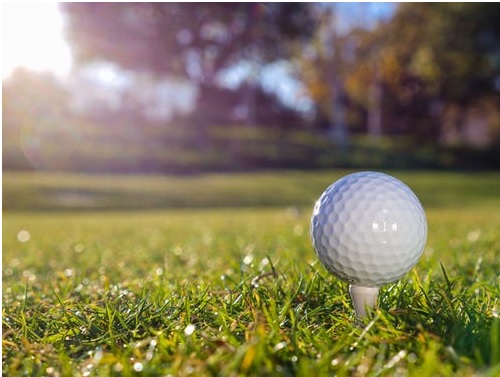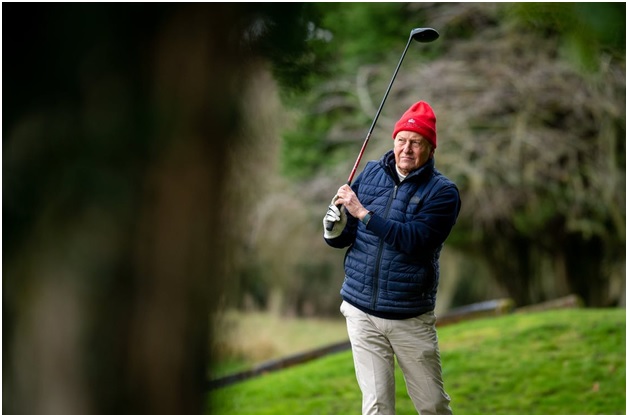Struggling with Shot Errors? The Best Golf Shafts for You May Help
Posted by Dallas Golf on 24 Sep 2021

Before we even attempt to offer you any advice on how to rectify shot errors, let us preface this article accordingly: the vast majority of shot errors are attributable to form, swing, or judgment. It’s rare that a golf shaft or club head causes an error. They say practice makes perfect. We would like to stress that practice makes better, at least. If you’re struggling with any of the shot errors we mention in this article, first take a step back and reflect on your form and stance.
If at the end of it, training and practice have not made any significant positive impacts on your game, then it is possible that whatever issues you are experiencing are being exacerbated by your equipment, notably the golf shaft that is paired with your clubhead.
So, with no further ado, let’s investigate some common, fundamental shot errors and how, or when, the golf shaft itself can be causing them. The best golf shafts - or simply better golf shafts for you - may help you fix them,
Whiffs, fat, thin, and topped shots
These shot errors all result from the club head contacting the ball in an inopportune fashion, and all of them can and will drastically impact the results of swing and shot placement - if there is any shot placement at all.
A whiff occurs when the clubhead does not contact the ball at any point during your swing. It could be because your stance is improper, or that you are not close enough to the ball. Typically, a whiff occurs when the clubhead passes over the ball, clearing missing it. It still counts as a stroke. It is possible that this error can be caused by a golf shaft that is too short, causing the golfer to adopt an unaccommodating stance in order to “make up” for a short shaft.
Thin shots occur when the club head contacts the ball above the clubface, and topped shots are an extreme example of thin shots wherein only the leading edge of the club face “clips” the golf ball. Like a whiff, these errors are commonly caused by improper technique or inconsistent form, but they can also be caused by golf shafts that are not properly mated to your measurements.
On the other end, you have a shot error known as a fat shot, which occurs when the club face strikes the ball below the sweet spot, striking the ground beneath the ball. This is not only an unpleasant experience, it can be damaging to your equipment, and will utterly ruin your swing. Like whiffs, topped, and thin shots, a fat shot can be caused by poor form, but it is also possible that the golf shaft itself is too long. The best golf shafts for your measurements, by contrast, will be precisely matched to your unique dimensions.
Fades, draws, slices, and hooks
Slices, hooks, and fades are all similar shot errors that may also be caused (or exacerbated) by your golf shaft, as the flexibility, more specifically, the torque rating, of your golf shaft plays an important part in how the club face strikes the ball.
A slice is a shot error wherein the golf ball begins its flight on a trajectory to the left before “slicing” to the right. A hook is the opposite; where the ball begins by spinning off to the right before “hooking” in to the right.
Fades and draws are similar to hooks and slices (respectively) but the motions are much less pronounced. However, all of these shot errors are caused when the clubface either strikes the gold ball while open or closed, causing the ball to spin to the left or the right. The golf club head may strike the ball while open or closed for a variety of reasons, and many of them are attributable to user error.
For example, taking a grip that is either too strong or too weak can cause the clubface to strike the ball at an inopportune angle. It’s also possible that improper stance will cause the player to twist the shaft in or out during the swing. Again, first analyze your swing, before placing the blame on your equipment.
However, it is worth noting that golf shaft flex may be the culprit here. Shafts that are either too flexible or too stiff may cause the clubface to contact the ball at an open or closed angle; specifically, the torque rating may be to blame.
Torque rating, which refers to how much the shaft will rotate around an axis that runs through the center of the shaft, basically gives an indication of how much the shaft will “twist” during the swing. Higher torque ratings are normally associated with more flexible shafts, whereas lower torque ratings are typically associated with stiff shafts.
If you have a particularly high swing speed, your golf shaft will be liable to twist throughout the swing and the clubhead may be open when it contacts the ball. This is one of the reasons that experienced players and players with higher swing speeds tend to prefer stiffer driver shafts with lower torque ratings.
Conversely, players with slower swing speeds may be frustrated when playing with stiffer golf shafts, sinch stiffer shafts are less forgiving of issues with stance, grip, or swing that will cause the clubface to contact the ball at an open or closed-angle. Luckily, modern multi-material and graphite shafts can be manufactured in a range of stiffness and torque ratings that can perfectly suit your swing speed.

While you may suspect that your equipment is having an adverse impact on your golf game, the only way to be sure is to enlist the help of an experienced, professional trainer. A trainer will observe your swing before making any recommendations about adjusting your equipment.
Nonetheless, while user error accounts for the majority of shot errors detailed in this article, it’s also possible that the specific attributes of your golf shafts are causing or exacerbating the issue. The best golf shaft for your measurements and swing speed will help you refine your technique during practice, not frustrate you.
To learn more about how to rectify these errors, please feel free to get in contact with us at 800-955-9550 or visit us in our store. You can also make an appointment to come in and meet with our professionals for club fitting services!
